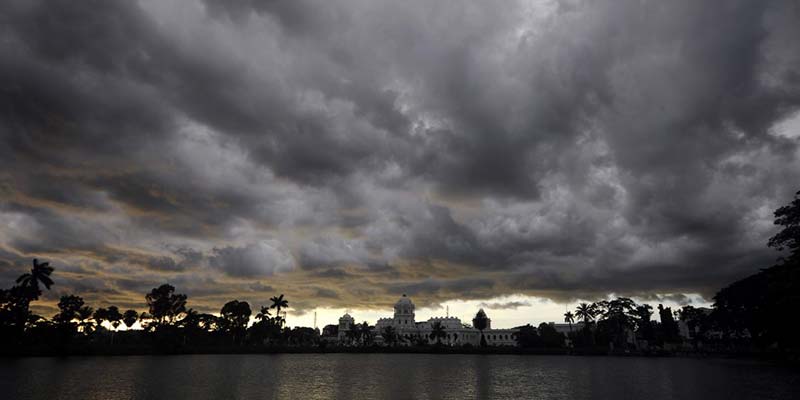- World
- Sep 04
La Nina may affect weather from September, says WMO
• The cooling climate phenomenon known as La Nina could return between September and November, but it won’t stop the trend for warmer global temperatures caused by human activity, the World Meteorological Organization (WMO) said.
• Neutral conditions — neither El Nino or La Nina — have persisted since March 2025, with sea surface temperature anomalies remaining near average across the equatorial Pacific.
• Latest data indicates a 55 per cent likelihood that sea surface temperatures in the equatorial Pacific will cool to La Nina levels from September to November.
• About 90 per cent of the excess heat from global warming is stored in the ocean, making ocean heat content a critical indicator of climate change.
• There is a smaller chance (45 per cent) that Pacific temperatures will stay as they have for the past six months, when neither the cooling La NiNa nor its opposite number, the warming El Nino, caused unusual spikes or dips in sea surface temperatures.
What is El Nino and La Nina?
• El Nino and La Nina events are a natural part of the global climate system. They occur when the Pacific Ocean and the atmosphere above it change from their neutral (‘normal’) state for several seasons.
• It occurs on average every two to seven years, and typically lasts nine to 12 months.
• El Nino, which is the warming of the waters in the Pacific Ocean near South America, is generally associated with the weakening of monsoon winds and dry weather in India.
• It influences weather and storm patterns in different parts of the world. But it takes place in the context of a climate being changed by human activities.
• It is associated with increased rainfall in the Horn of Africa and the southern US, and unusually dry and warm conditions in Southeast Asia, Australia and southern Africa.
• La Nina, which is the opposite of El Nino, typically brings good rainfall during the monsoon season.
• These changes in the Pacific Ocean and its overlying atmosphere occur in a cycle known as the El Nino–Southern Oscillation (ENSO).
• The term ‘El Nino’ translates from Spanish as ‘the boy-child’. Peruvian fishermen originally used the term to describe the appearance, around Christmas, of a warm ocean current off the South American coast. It is now the commonly accepted term to describe the warming of the central and eastern tropical Pacific Ocean. ‘La Nina’ translates as ‘girl-child’ and is the opposite ENSO phase to El Nino.
• However, naturally occurring climate events such as La Nina and El Nino events are taking place in the broader context of human-induced climate change, which is increasing global temperatures, exacerbating extreme weather and climate, and impacting seasonal rainfall and temperature patterns.
Importance of El Nino & La Nina forecast
• El Nino and La Nina associated forecasts are critical for early warnings and taking pre-emptive action.
• These forecasts translate into millions of dollars’ worth in economic savings for key sectors like agriculture, energy and transport, and have saved thousands of lives over the years by enabling disaster risk preparedness.
• La Nina, with its large-scale cooling of ocean surface temperatures in the central and eastern Pacific, changes wind, pressure, and rainfall. Typically, it brings climate impacts opposite to El Nino, especially in tropical regions.
• For instance, during El Nino, Australia often experiences drought, whereas La Nina can bring increased rainfall and flooding. In contrast, parts of South America may experience drought during La Nina but wetter conditions during El Nino.
• Notably, these natural climate events are currently occurring alongside human-caused climate change, which is warming the planet and causing more extreme weather.

